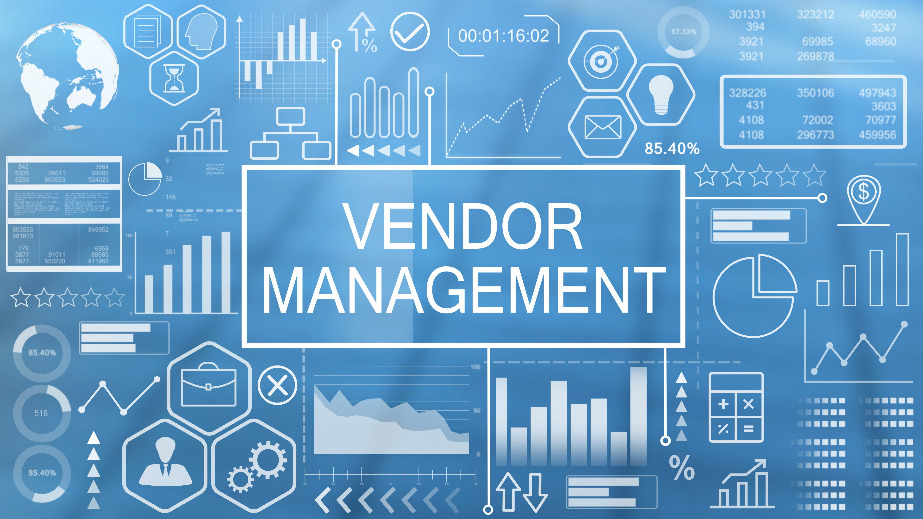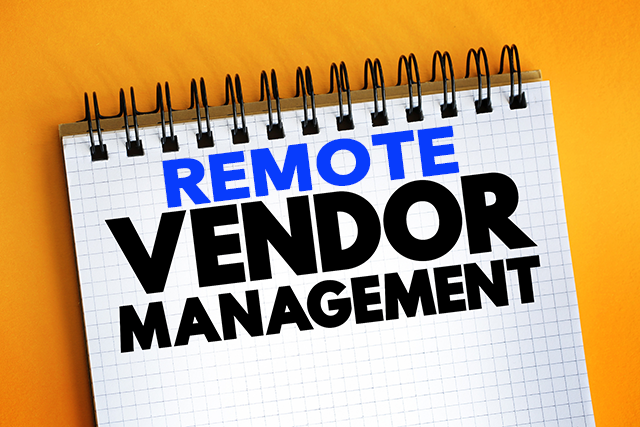
by Tom DellAringa | Jan 3, 2023 | Supply Chain, Vendor Management
As a business, you will have multiple vendors, and their numbers will grow as you expand. While it may be easy to manage them initially, managing vendors and their relevant information is bound to become more difficult with time. In such a case, you need advanced strategies and management tools to help you manage all your vendor information.
Thankfully, in this era of modern technological influence, you will have enough aids and tools that can help you manage your vendor information better. With such assistance, your vendor management will to improve. In this article, we will take you on a guided tour of everything about vendor management — what it is and the benefits it carries.
What Is Vendor Management?
To begin with, let us first understand what vendor management is. In simple words, vendor management is the process that allows a company to take appropriate measures to manage various vendor-related data in a way that allows the following:
- Managing budgets and funds
- Reducing vendor-related risks
- Ensuring excellent deliverables from vendors
- Maintaining the quality of service from vendors
In short, vendor management helps improve your relationships with vendors and suppliers for the long run to enjoy a fruitful relationship mutually.
Vendor management is a long and complex process that involves various stages and procedures. Let us outline the main few stages:
- Identifying your business targets and goals
- Creating an RFP (Requests For Proposal) and defining projects
- Shortlisting and identifying worthy vendors and suppliers
- Evaluating numerous vendors, including specifications of deliverables and risk factors
- Deciding on selected vendors
- Negotiating and writing the contracts
- Managing relationships and evaluating performances
- Making timely payments
- Evaluation and improvement of relationships
How Can Vendor Management Be Beneficial?
Now that we have come to understand vendor management, let’s move on to understanding how vendor management can be beneficial to your business. If you are a small business owner, you might wonder why you should concern yourself with vendor management.
While your business may be small now, it will expand in the future. You’ll want to keep up your business with your suppliers consistently. What vendor management does is help you refine your relationship with your vendors. This can only benefit your business in all positive ways.
Here are a few significant benefits that vendor management offers you that businesses should consider.
Helps you single out the best suppliers
As we mentioned earlier, the vendor management process includes various steps that help you shortlist, assess, and write a contract with the vendors that will offer you value for money.
In other words, vendor management helps you to go through available vendors and suppliers in your area carefully and helps you select the vendors that you can trust and will be able to meet your expectations.
When you have the right vendors on board, you need not worry too much about performance. Yet, the vendor management process allows you to regularly and consistently maintain an overall view of all your vendors, their statuses, and their performances.
Through this, you can keep an eye on how things are going with individual suppliers. If supplier performance is not well, you can renegotiate or end the contract, thus increasing the efficiency of your company.
Reduces issues with contract management
Establishing proper contracts is a significant factor. But when you have more than a few vendors, it can be difficult to manage contracts, which can bring problems and increase risk.
However, with vendor management in place, you can easily have an overall view of all contract status and other related information. This will help enhance decision-making based on insightful data. Thus, your business can benefit from avoiding vendor-related risks while saving time.
Improve vendor relationships
Last but not least, having a good vendor management system in place can help you keep up and improve your vendor relationships in the long run. The better you manage your relationship with vendors, the higher your chances of completing your projects successfully.
While some vendors may be exactly what you expected them to be, others may fall short of your expectations. What vendor management does is help you realize which vendor is worth your time and help maintain that relationship for a long time.
Conclusion
In this era of technology, vendor management has become much easier with appropriate tools like vendor management systems and software. According to surveys, the utilization and application of vendor management software are to steadily increase by over 13% in the coming few years.
If you wish to improve and manage your relationship with your vendors better, look for a vendor management system that meets your expectations and improves relationships with your vendors.

by Tom DellAringa | Dec 29, 2022 | Vendor Management, Accounts Payable
The pandemic changed a lot of things about the way the world operates. While day-to-day operations became difficult, industries worldwide came up with new means and methods to keep functioning. When people could not leave their houses, digital and technological tools became a means of salvation.
What would have happened anyway accelerated in a few months, making our society advance rapidly. This not only brought a change to how we do things, but it also changed various scopes and gave birth to new opportunities.
In this article, we will focus on one such particular change — vendor management from home. We will discuss the major changes in this field and what new aspects came to light under the unique circumstances.
How Vendor Management Changed During the Pandemic
Vendor management is the process of dealing with all activities related to the purchasing decisions of a company. This includes selecting and approving suppliers, entering into contracts with approved vendors, managing them, and ensuring that they live up to the agreed expectations of the company.
While vendor management has always been around, recently, it has risen to special prominence as people started understanding how vital vendor management is. The better you manage your vendors, the better later outcomes will be.
Vendor management was already getting better tools and aids to increase efficiency and productivity, but the upgrade sped up rapidly due to the pandemic. As people had to stay back home, Vendor Management Software or VMS rose to prominence.
VMS is a system or software that allows you to effectively manage your vendors and every other related activity through a single centralized platform. Through this software, vendor managers and procurement teams could keep functioning even while they were restricted to the boundaries of their homes.
The Role of Vendor Management Software During the Pandemic
The VMS market started growing rapidly after the start of the pandemic. In 2019, the market was valued closely at 5.21 billion USD and was said to have a steady growth rate ao approximately 13% in the coming few years. This data will give you a brief insight into how rapidly the VMS market is growing, and for good reasons.
During the pandemic, the VMS rose to prominence, allowing vendor managers to actively manage the vendors of their companies through a centralized platform. While it was a sudden jump from physical and traditional means to a complete online and digital method, the results were excellent.
If anything, the AI and automation features of the software made the procedures much more efficient, organized, simple, and highly productive. Here are a few prominent features of the VMS to help you understand why it had the effect it did:
- Simple procedures for vendor onboarding
- Easy and effective tracking features to have an overall view of various vendor status
- Highly collaborative functions such as self-service portals to ease collaboration efforts and increase efficiency and save time
- Easy access to vendor data, allowing for critical reviews and changes
As you can see, all these features allow you full control of your vendor management, even if you were unable to step out of your house. It allowed you to operate in the same manner, with better results, even when you could not physically carry out the tasks.
Along with VMS, other useful tools made it easier for vendor management teams to keep at their work even during lockdowns. Various online conference and video calling tools allowed managers to stay in touch with vendors seamlessly, and all meetings and conferences started being online.
There were also major changes to the numerous procedures as more and more digital tools started making their way into the workflow. Even if no one could go to the office, cloud storage, IoTs, and so on allowed team members to stay in touch to carry out operations and projects.
Vendor Management From Home — Roles And Responsibilities
During the pandemic vendor managers had to come up with their own rules and regulations to operate systematically. Here are a few roles and responsibilities that vendor managers and other teams members had to abide by to successfully keep working even from home:
- Abiding by standard ground rules and regulations set up by the company to ensure the safety of company data
- To make sure that you have the right equipment and tools to work from home without any hassles
- Setting up a make-do office space in your house to ensure full concentration and focus on work
- Learn to correctly use the proper phone application, software, and other tools
The pandemic saw a lot of changes in the various industries across the globe. While the vendor management industry requires a lot of on-site actions, thanks to VMS and other tools, companies were able to make significant progress in this field.

by Tom DellAringa | Dec 27, 2022 | Suppliers
Suppliers are essential parts of the business module. You must ensure that your business maintains a good and healthy relationship with your suppliers. You must have a well-defined and prominent onboarding system and procedure to establish that.
Unfortunately, onboarding suppliers is a local procedure as suppliers may vary from region to region, especially for global enterprises. The regional nature of suppliers results in an onboarding process that is not well-defined, centralized, or easily managed. Due to this, onboarding processes can take a long time.
However, there are ways where you can streamline your supplier onboarding procedures. Consider using these five methods to improve your onboarding process.
Opt for Self-Service Portals for Suppliers
One of the main steps in the onboarding process is to collect and go through all relevant information about suppliers. This can be a lengthy procedure as information is exchanged back and forth between potential suppliers and the company to collect all the necessary information.
This not only wastes time but can also be an expensive process. However, all these hassles can be avoided by simply making self-service portals for suppliers. The suppliers can upload and submit all the required documents on their own time, which is much faster than traditional means. The company can review them immediately and move on to the next step.
Access and Management of Centralized Data
Information and data are big factors for all kinds of business activities. You would want valid and correct information about your suppliers, which you can access easily. Otherwise, it may cause significant issues in the future.
To avoid that and ensure that all your information is correct and centralized, you can implement services that can apply information validation rules to all the data being collected in your database.
Also, having all your information gathered and organized in a centralized platform will allow convenient access. With the self-service portals, onboarding processes can become simpler and take much less time.
Work on Your Onboarding Qualifications to Reduce Risks
A significant factor in the onboarding process for suppliers is the risk factor. You can never predict the authenticity of a supplier. Therefore, to avoid that, ensure you have a thorough process with specific qualifications. Make sure your supplier is someone who can deliver what you expect.
To reduce the supplier risk factor, ensure proper communication wherein you convey to the suppliers the values, goals, and expectations of your company while understanding their conditions and what they have to offer.
Only when your onboarding qualifications are met should you proceed with the next steps and consider whether you want that supplier to be on board.
Integrate Other Business Systems for Maximum Benefit
As mentioned earlier, data is an essential factor that can help you make or break the process. It can help you sign contracts with trustable suppliers, but there’s more to consider.
Once the onboarding process is complete and you have successfully selected and welcomed the suppliers, you can further use that information to improve upcoming processes.
For instance, you can integrate this collected information with other business systems, such as Product Information Management Systems and ERP, to make better-informed decisions and improve business activities.
Maintain Consistency and Transparency
Lastly, you would want your onboarding processes to be consistent throughout your company in its various locations. While companies have different onboarding processes and separate information bases for different locations, it can get troublesome if you want an overall view of your suppliers.
Therefore, opt for a system or tool that will offer you a centralized platform from where you can conveniently implement a universal onboarding system for your company. This way, you will also have all your supplier information in one place, making it easy for you to have an overall view and transparency of supplier data.
You can further use this collected data to do better negotiations and get into better deals with suppliers.
Conclusion
The onboarding process for suppliers is a crucial process that will help you come in contact with trustworthy suppliers with whom you can expect a long business relationship.
To create a great professional relationship with your suppliers, plan and figure out the onboarding process in detail. As an additional resource, check out these tips on streamlining your onboarding process can help you improve your supplier relationship, as suggested by leading companies in the supply chain.

by Tom DellAringa | Dec 22, 2022 | Procurement, Technology
Businesses around the globe are turning digital, thanks to the major digital revolution happening right as we speak. According to surveys, 89% of global businesses have either adopted a digital business strategy or are planning to do so soon.
Various tools can take businesses to a new level of success. As more businesses become digital, these tools are necessary for companies to survive and excel.
Today we will look at one particular section of business — procurement. Procurement involves everything from purchasing services and goods for the company required for business needs.
In other words, procurement for businesses involves all the activities of business spending. Procurement can also rely on digital tools to make it better. In this article, we will look at a few smart tools that procurement can use in the coming year.
Sourcing tools are essential tools that help manage and assist businesses’ entire sourcing and procurement process. It can help procurement teams locate and identify new suppliers.
Sourcing tools can also help you gain insight into supplier information and a complete view of your inventory, enabling you to understand what you need to source and from which entity to source.
Here are a few features to look out for while you are searching for a good sourcing tool:
- Eradicates all kinds of paper agreements and converts all transactions and actions into paperless procedures
- A seamless inventory that automatically updates existing information according to the latest occurrence
- Includes feature to effectively manage the budget to understand the flow of funds and restrict overspending
Earlier, managing suppliers and vendors manually was a tremendous job. You had to consistently keep in touch with your suppliers and ended up with confusion and miscommunication. However, with the digital world set in, such issues are not a big hassle anymore.
What a supplier management tool does is just as its name suggests — help you manage your business suppliers. So, the entire process is condensed into the software with a centralized dashboard to help you see complete information about your vendors and their status.
It also helps ease communication, thus making it easier for collaboration and data management. Take a look at a few must-have features for a good supplier management tool:
- Efficient tracking features to automatically update information regarding suppliers and the status of deals
- A centralized dashboard or management system that allows you to have an overview of all supplier and vendor image
- Self-servicing features for suppliers such as information and status updates
- Easy interface and communication features to avoid delaying matters
Lastly, one of the intelligent tools that your procurement team must have is the contract risk management tool. Anyone in procurement understands the time and effort it takes to review contract risk. While you may be extremely careful while tracking such risk, it can easily get difficult when multiple vendors come into the scene.
Contract risk management tools help you keep track of all such risk factors efficiently and easily. From tracking risks to tracking the lifecycle of contracts, these tools are simple yet miraculous tools that help simplify the entire process.
Here are a few characteristics that a good contract risk management tool will offer you:
- Identification and data mining properties enhanced with automation
- Automated notification and workflow systems to avoid complications of duties and tasks
- Robust risk management, assessment, and mapping features
Conclusion
The world is progressing at a fascinating rate where everything and anything is being impacted by technology and the internet. In such an environment, it would be a waste not to use these benefits to develop your business.
These procurement tools are precisely the opportunities that can benefit your company in the coming year. Now is the time to take the leap if you have not yet stepped into the digital era.
Procurement tools can help you manage your procurement procedures much more easily than traditional methods. Not only that, they help contribute to reducing expenditure costs while enhancing supplier relationships.
With the aid of artificial intelligence and automation, almost everything in the procurement process is simplified and made efficient. Help your procurement team ace their jobs, and take advantage of these procurement tools in 2023!

by Tom DellAringa | Dec 19, 2022 | Accounts Payable, AP Automation
In today’s market, transparency is very highly valued. In an accounts payable department, efficiency is of utmost importance, but so is transparency. It ensures that everyone who needs to know about the data gets to know about it.
While that is a simple explanation, this article will go into depth regarding data transparency, how AP automation can affect data transparency, and how it is advantageous for your company.
Data Transparency
What is data transparency?
Transparency in AP workflow means efficiently tracking and managing your invoices. This means that wherever in the process the invoice is, you can tell how far it has gone, whether or not it has been paid, and how long until the process is completed. This is necessary to avoid any kind of fraud in your company. In addition, data transparency can save you from huge losses.
Data transparency also means that anyone allowed access to the invoices can look at them, even remotely. Suppose you are on vacation and something comes up regarding the invoices that have not been paid in your company. In such a case, if others cannot access it, there can be a lot of trouble. Data transparency is required if you need to give rightful access to others.
How do you achieve it?
There are many ways of achieving transparency. The first is the automation of your AP workflow. While that is the topic of discussion in this article, there are other ways in which you can do so. If you are working in a company with a pre-established AP workflow and cannot automate it easily, you can make the process transparent by taking care of the invoices sent from your side.
Payments can be made through methods that can be easily tracked, like online payments or net banking, so that you know when the transaction has taken place and the status of the transaction. This can be very impactful on your pocket, as it prevents any sort of fraud or bad transactions. This also increases the transparency of the invoices, which is what you want.
Automation of AP processes
Accounts payable processes require automation in this day and age. AP automation includes a lot of things like making digital invoices, making online payments, and storing all the data of the vendors digitally. Automating all the processes is highly beneficial for your company; it makes sure that you don’t lose your data, you have a transparent network, your invoices aren’t duplicated, and you don’t experience losses in your business.
If you automate the process, the chances of fraud are exponentially reduced. If you always know where the invoice is (usually within the software) and you know when the invoice is paid, you will know if there is something off during the payment. This reduces fraud chances and speeds up payments, increasing the trust with your supplier.
Automating the process also makes the entire process a lot easier and more efficient. Accounts payable processes are the heart and soul of a business and making sure they are done properly will result in financial benefit.
Advantages of transparency
There are various advantages to transparency in your AP workflow. These include:
- The first advantage to data transparency is that it brings all your data to one place. This way, you don’t have to search for getting appropriate data; you can just enter a query or search the sorted file to get the necessary information.
- Another advantage is that it makes sure that your work is efficient. Efficiency and transparency are interrelated; if your processes are efficient, your data is bound to be transparent. This is because you can check the process at any time; you’ll get consistent results and hence, transparent data.
- It integrates all your processes to work in a flow. The more transparent your data is, the more probable you are to have minimal errors in your workflow. All your processes will gel together to form a good workflow.
Conclusion
In conclusion, making your workflow more transparent is something every company should aim to achieve. It makes sure that your work is done in a timely and efficient manner. There are various advantages to making your processes transparent, increasing the efficiency of your workflow, and increasing the trust with your supplier. There can be some trouble in automating your AP workflow, but it is worth every bit of effort you put into it. Hopefully, this article highlighted the importance of transparency and inspired you to strive toward it.





